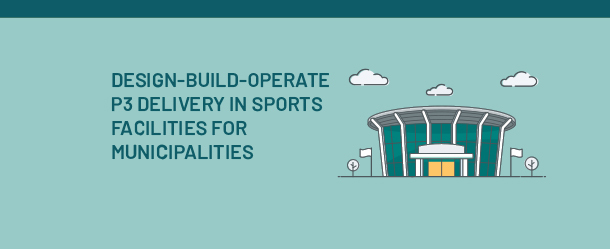



Most of us grew up playing sports throughout the year. The type of sport was typically determined by the season. Sometimes we were free to play outdoors while other times the weather kept us indoors. No matter the environment, we all have fond memories of those places where we spent our formative years learning sportsmanship, active life skills, and how to be part of a team.
The growing interest in sports and the use of sporting facilities has resulted in the development of a unique architecture, engineering, and construction (AEC) industry sector around the design and construction of athletic facilities. These facilities support public interest in sporting events as well as private sector business opportunities in and around sports. They also serve as a hub for community engagement and a source of jobs and revenue for the surrounding population.
Indoor sports facilities can contribute to broader economic improvements beyond the direct impacts of facility operations. Youth sports teams can benefit from using “year-round” indoor sports facilities, which typically includes swimming, soccer, basketball, ice rinks, and tennis. Venue operators can schedule community events and other uses for the facilities in and around such sporting events to complement indoor recreational sports leagues.
In addition to economic stimulus from local community sports, these facilities often host regional competitions which can be a positive benefit for local retailers and the hospitality sector as the teams bring out-of-area guests into the community. Further, the expansion of sports participation results in better public awareness of the benefits of physical activity and health which can lead to more demand for other industry services.
For many new sports facilities, public owners are using Design-Build-Operate (DBO) contracts as a beneficial delivery option. This unique project delivery model is where a single general contractor (or developer) is appointed to design and build a project and then continue on to operate it for a designated period of time. This format reliably ties the execution of design and construction to the operational results, keeping the vendor engaged in providing the best end deliverable possible. However, it does tie both the owner and the DBO contractor into a very long-term relationship that can be difficult to price.
The DBO team receives a concession fee from the public sector (or the private sector on rare occasions) to finance, design, construct, and operate a facility covered under the overall DBO contract. This enables the project proponent to recover its initial capital investment, along with operating and maintenance expenses involved with the project. This model is normally considered as a form of public–private partnerships (P3). Due to the long-term nature of the arrangement, the fees must raise sufficient revenue during the contract period. The rate of increase in fees is often tied to a combination of internal and external variables, allowing the proponent to reach a satisfactory internal rate of return for its investment.
Before undertaking a significant capital project like an indoor sports complex, the market should be studied to confirm the demand and further identify the key components of the project. The study should involve surveys and interviews with the community and key stakeholders. Some key questions that must be answered: Will it be financially viable? What will the primary usage be and by which sport? Will it be for local use, regional use, or combination of the two? Does it have nearby competing facilities that may dilute market share? Is the infrastructure in place to support the goals – hotels, restaurants, parking, access? How will it be operated?
A great way to bring innovation to the planning of a public indoor athletic facility is through a P3 project delivery approach. Athletic facility operators have expertise in managing these facilities and their key input during planning, design, and construction could be the difference between a successful endeavor and a struggling one. The private sector can bring innovative ideas to the table that make facilities much more appealing destinations for community activities or regional tournaments. Once construction is completed, it can be very difficult to correct operational design flaws like awkwardly placed restrooms or a lack of camping (i.e. team gathering) areas for events involving large teams and visitors.
Many states have legislation that allows public bodies to engage in P3 projects. For a P3 to be successful, it must be a true partnership based on mutual trust between the public and private entities. The public entity will typically evaluate multiple private proposals to determine which is the best fit for their program. This evaluation may be arduous since the private side of the partnership may be comprised of dozens of different firms including developers, general contractors, subcontractors, architects, design subconsultants, specialty consultants, attorneys, financiers, and facility managers. Not only is experience important in selection, but experience of the private entities working successfully together should be a key selection criterion. Are they the A-team or a pick-up team assembled on short notice for convenience? It only takes one firm lacking the right experience or with a troubled history to cause challenges for the entire delivery team.
Whereas the risks and responsibilities of traditional design-bid-build projects are quite clear, the design-build delivery adds a layer of complexity in assigning responsibility for various risks. DBO goes even further by adding more complexity since the private role does not stop when construction ends. Accordingly, the public entity needs to put plenty of forethought into how the facility will be operated and maintained after it opens, and often for many years to come. If the operator is managing the facility “for profit,” those interests may conflict with the public entity’s own interests for use of the facility. Prior to entering into a comprehensive agreement for the P3, there must be clear understanding of the public and private responsibilities and expectations during the operational cycle of the facility. These critical contractual terms need to be thoroughly analyzed before being memorialized in the agreement.
In summary, the DBO delivery is a promising alternative project delivery option to providing important public infrastructure. This form of P3 contracting can benefit the public owner by providing access to the creativity and expertise available in the private sector. The delivery method can be complex, however, the end results can make the additional time and resources used to set up the most effective concession plan well worth the effort.
Learn more about the benefits and process of a P3 delivery.
Learn more about P3 delivery by visiting additional blogs below:
Summer Road Trips and Public-Private Partnerships
P3 Delivery: Are We Riding the Brake or Pressing the Gas Pedal?
Comments